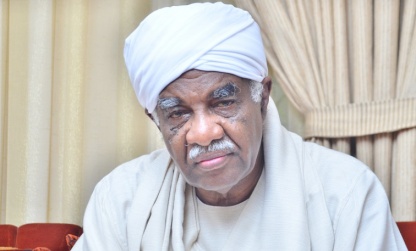Who Is Responsible for the War and Its Consequences?

By Dr. Ibrahim El-Amin
War is unjust and destructive—this is evident in the numerous and diverse crises we now face, most of which are of our own making, either through direct action or through our silence in the face of crimes and violations that are both religiously and nationally forbidden. The vile war and its consequences—killings based on identity, and systematic destruction that has spared neither people, nor nature, nor heritage—have brought the country to its knees.
The root causes of these disasters lie in the struggle for power and the unstable, dysfunctional relationship between the two key parties to the conflict: the military component and the civilian component.
Here, we must recognize a painful truth: all the great uprisings in Sudan have had their outcomes co-opted by warring factions, rather than leading to lasting peace and serving the higher interests of the country. Moreover, none of the agreements reached were truly permanent or firmly established—they were temporary truces that halted renewed wars only momentarily.
The 2005 Agreement:
This was the Comprehensive Peace Agreement (CPA) signed in Naivasha between the Sudan People’s Liberation Movement (SPLM) and the Sudanese government. It ended the longest civil war in Africa—but it failed to achieve lasting peace.
The continuation of conflict over the future of regions excluded from the Naivasha Agreement paved the way for renewed violence. Strangely enough, these regions were not geographically part of southern Sudan. They included the Abyei Area, South Kordofan (Nuba Mountains), and Blue Nile State. It is worth noting that Abyei is considered a disputed area between North and South Sudan.
Including these three areas in the conflict with South Sudan expanded the geographic scope of the South from one-quarter of Sudan’s total area to nearly one-third. Their inclusion in the agreement led to continued warfare for a simple reason: these areas were already at the heart of deep disputes among the parties to the conflict due to differences in population composition, geographic distribution, and natural resources.
We must note here that the inclusion of these three areas in the agreement without providing acceptable solutions only added complexity to Sudan’s political and security situation. These regions are rich in diverse resources, which made them fertile ground for conflict and war between Sudan’s various factions.
The crisis deepened further with the secession of the South, as disagreements arose over the border regions and shared areas between North and South Sudan, turning them into hotbeds of dispute and mutual accusations. Thus, the desired peace and stability were never achieved.
The 2020 agreement between the transitional government and the armed movements also failed to offer comprehensive solutions. While it was an important step toward peace in Sudan, the ongoing political struggles and wavering positions among the signatories have worsened the crisis to the heartbreaking state we now live in.
To emerge from this crisis, we must first acknowledge that the situation in the country has become far more complicated, and that it now requires radical solutions, broad participation, sincere vision, and a national project based on consensus and committed implementation.
This will be the subject of the next article, God willing…



